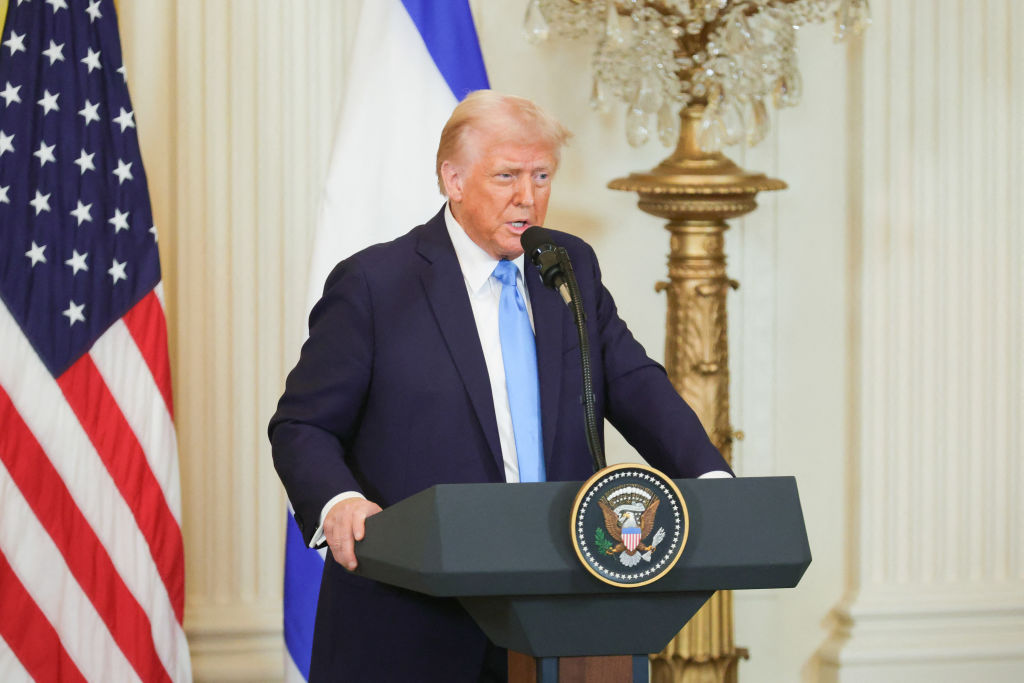‘The US will take over the Gaza Strip – and we will do a job with it, too’, Donald Trump has said. He also stated that the US would ‘own’ it.
Some aspects of his proposal make sense. For instance, he said that an increased US role would involve dismantling unexploded bombs and clearing out the rubble from the war. This, he argued, would enable Gaza to be transformed into an economic success. Instead of exporting war, Gaza would export peace. ‘Level the site and get rid of the destroyed buildings, level it out, create an economic development that will supply unlimited numbers of jobs and housing for the people of the area,’ Trump said.
The more straightforward part of Trump’s proposal is the removal of debris and securing funding to rebuild areas devastated by 15 months of war. Trump wants regional countries to contribute to the reconstruction. He has already demonstrated his commitment to change by sending his envoy, Steve Witkoff, to the Middle East in early January to negotiate a ceasefire and hostage deal – even before taking office. This marked a departure from a year of the Biden administration’s policy, which had failed to produce any significant progress regarding Gaza.
Now that a ceasefire is in place, attention turns to what comes next. The biggest obstacle to change in Gaza is Hamas. In the wake of the ceasefire, Hamas has sought to portray itself as victorious. It has held ceremonies during the weekly release of hostages, displaying them before crowds and showcasing the continued presence of its gunmen in Gaza. Hamas also has powerful backers abroad – in Qatar and Turkey – both of which are western allies. This means that removing Hamas and enacting meaningful change in Gaza would require Trump to persuade Ankara and Doha to cooperate.
The most significant challenge in Trump’s plan is the assumption that some 1.7 million people would agree to leave Gaza. Furthermore, it is unclear which countries would accept them. Trump has suggested building housing for resettled Gazans elsewhere.
However, historically, most Middle Eastern countries have been reluctant to take in Palestinian refugees or to play an active role in addressing Gaza’s problems. For instance, prior to 7 October, most regional governments appeared indifferent to the disaster Hamas was preparing with its bloody attack on Israel. Hamas massacred more than 1,000 people and took more than 250 hostages. However, across the Middle East on that day, there was little indication that regional leaders were surprised or particularly concerned about the attack. Their failure to take it seriously was a mistake: the attack triggered 15 months of war, leading to fighting in Lebanon, Iranian-backed Houthi assaults on Red Sea shipping, and destabilisation across the region.
Trump is proposing a fundamental shift. He rightly notes that Gaza has lurched from one war to another for decades, bringing only death and destruction. However, the region has a great deal of inertia when it comes to major change. Trump’s first administration helped pave the way for the Abraham Accords, which have been important but have not yet led to further peace deals for Israel. The challenge for his next administration will be to persuade Saudi Arabia, the Gulf states, Jordan, Egypt, and others to take an active role in Gaza’s future.
Even if Trump’s plan is not fully realised, his proposals could encourage countries to get more involved in Gaza, rather than allowing it to remain under Hamas’s rule as a persistent source of terror and instability.
Watch more on Spectator TV:







Comments